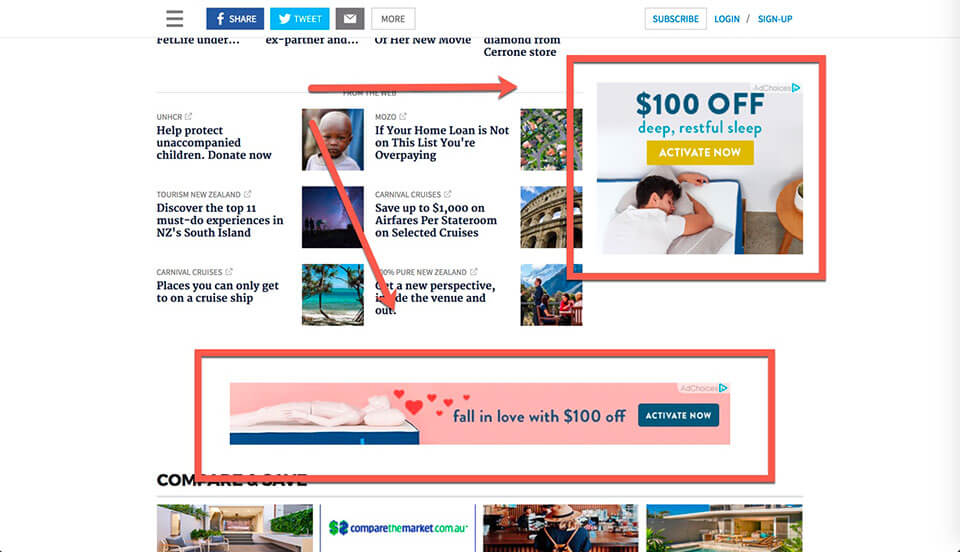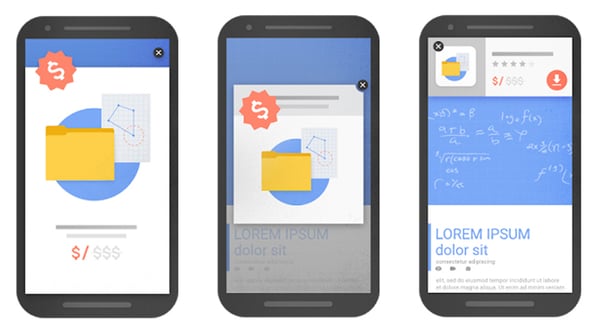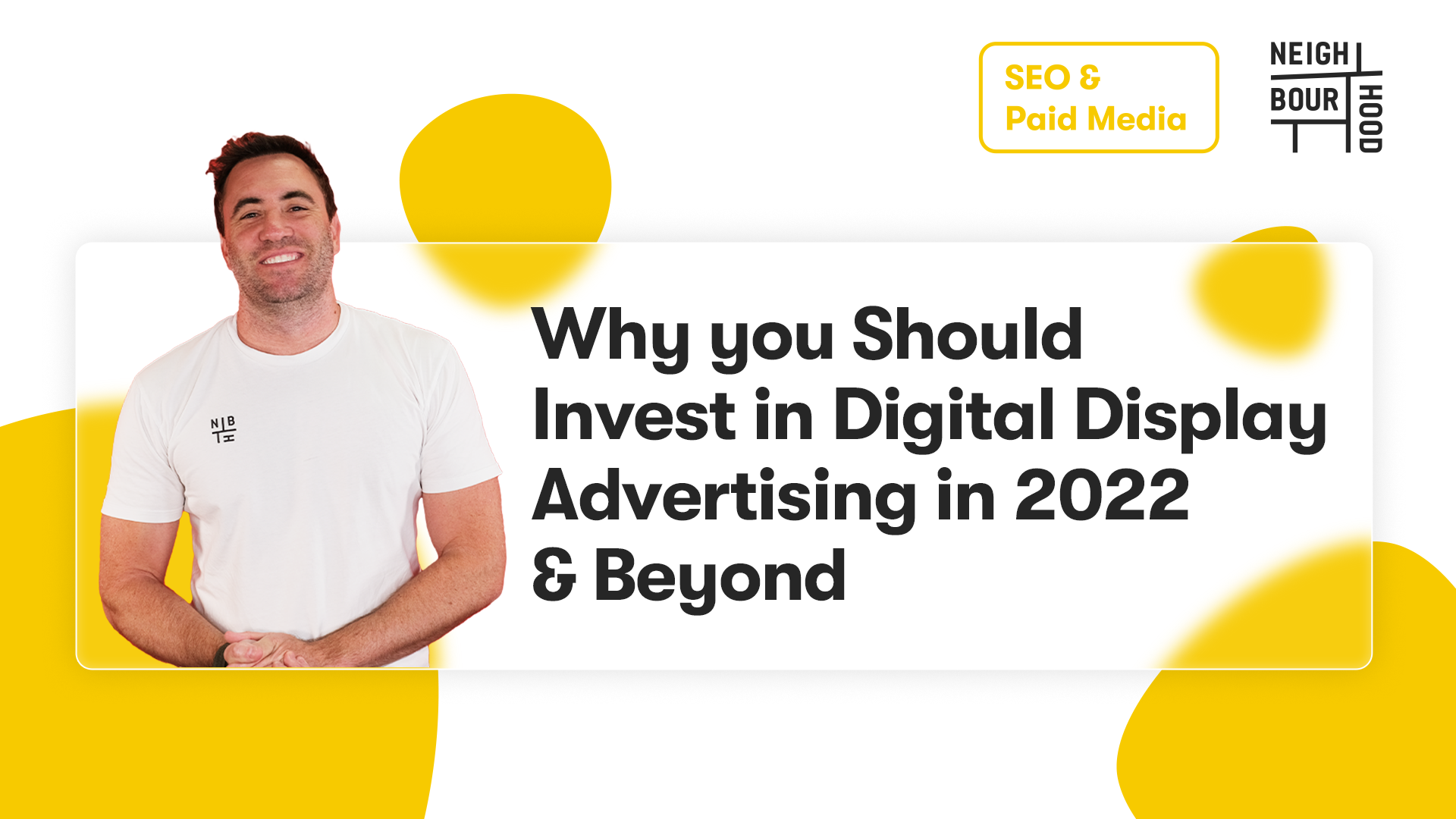Understanding the mystery of digital display advertising may seem a bit like trying to crack the Da Vinci Code. While they may not be equally as thrilling, understanding digital display advertising will help you to boost your marketing efforts, making you feel like the hero instead.
Doing display advertising right will bring lots of benefits to your organisation, so it's essential to do it right. Think of this article as a roadmap to help you navigate through the world of digital display advertising, to help you with all the questions you might have about creating a robust online display campaign, how to measure your results, and how to optimise your future campaigns.
What is Display Advertising?
Despite the endless advancements in technology that allow us to do bigger and better things we once thought never possible - display advertising is an O.G in digital marketing. In fact, the first banner ad appeared on the web back in 1994! It was a small AT&T rectangular ad on what was the first version of Wired.com. Almost three decades later, the fundamentals of display advertising haven't changed much, aside from the fact that the ad industry generating revenues of hundreds of billions per year - so really, how hard can it be?
Display advertising typically refers to text or graphic banner ads that are inserted on social media platforms such as Facebook or Instagram or in specifically designated areas of a website. Even though digital display advertising comes in multiple forms, all of its variations revolve around the same principle. They’re there to stand out, steal the show and divert your attention from the web page to them. To do exactly that, they often range from static images and animations to videos and even interactive games and applications. Once they have got your attention? By clicking on the ad, it sends the user to a dedicated landing page or company website.
Why Should You Incorporate Display Ads in Your Marketing Campaigns?
Digital is almost as competitive as you and your siblings are when it comes to a family game night playing monopoly. So with TV advertising being the only type of advertising larger than display advertising, it makes it an extremely attractive option for digital marketers to remain in the game. Not only does it offer you the power to showcase your products and services across the internet it also gives you exposure to thousands of potential customers. To avoid being that person in monopoly who flips the board from losing, my advice would be to invest in a digital display strategy.
With display ads, you can reach your audience like never before because you're no longer restricted by email providers or a user's preferred social channel. Instead, your brand can reach potential consumers across the internet wherever they might be looking for services, goods, and news.
Display ads also have the potential to boost your marketing ROI because they increase brand visibility and awareness and work great for customer acquisition. When targeted at the right audience and optimised correctly, display ads are among the best ways to increase ROI.
How Does Display Advertising Work?
The main purpose of display advertising is to attract the audience of a website, social media platform, or another digital medium to click-through to a landing page and take action. For example, this could be to click through to make a purchase from an ecommerce store, or in our instance at Neighbourhood, signing up to one of our Webinars.
Display ads often consist of text, images, videos, or a combination of these, and you can choose from multiple forms, including the following:
- Banner ads — banner ads are one of the oldest forms of online advertising, and they typically appear at the top of a website and sometimes at the bottom.

- Interstitial ads are ads that appear as webpages served to users before they reach the actual page they requested.

- Rich media ads — these ads are interactive, and they typically include video, audio, and clickable elements. Check out the rich media ad Netflix promoted for the Narcos TV series.

- Video ads — video ads allow digital marketers to reach their audience on platforms such as Instagram, Facebook, YouTube, but also on traditional websites. They are the newest kid on the block and have opened a whole new avenue for marketers.
Most online advertising campaigns are charged on a cost per click basis. This means that you get charged every time a user on a search engine or website clicks on your ad with the amount you get charged varies according to your overall bidding strategy. Essentially, you want to design an ad that is attractive and relative to your target audience, so that your cost per lead remains low.
What is a Display Ad Network?
Ad networks have been around since pretty much the beginning of the time - of the internet that is. As with all things technology, while display advertising is still extremely relevant almost 3 decades on, their strategies have evolved with the times. Today, ad networks typically offer advertisers exclusive deals and buy inventory from top-tier publishers to resell the ad spaces at premium prices.
A display ad network acts as a broker between a group of advertisers and the group of publishers. This type of technology platform helps advertisers buy available ad space from multiple publishers.
Publishers typically benefit from ad networks because they get the opportunity to sell inventory that they couldn't sell through direct deals. But ad networks are also advantageous for advertisers because they allow them to buy more inventory from a large number of publishers without having to reach directly to them, which saves time and allows them to set a single campaign that is run through the ad network.
How Do I Use Display Advertising?
Enough about the why and what to display advertising it’s time to get to the good part - how the hell to do it. A successful display advertising campaign typically complements a multichannel marketing strategy. As a business, you should aim to have a unified branding and strategy both online and offline, which will help with brand awareness.
Display advertising is not the same as 'remarketing' because with the latter, advertisers can serve up ads that are based on behaviour patterns and the content of a website. This translates into many more opportunities to reach customers, as you can easily tailor and target ads to your specific audience.You can also use display advertising to bring back users that failed to complete the desired action.
For example you've probably visited a website before - let’s call it Website A - where you’ve been browsing their products, and added a few things to your basket but never followed through with a purchase. You then start to notice advertisements being displayed on other websites from Website A. Well this isn't just a coincidence - it's a little something called targeting. Targeting people who left a particular item in their shopping basket, can be easily targeted through display advertisements to remind the visitor to go back and follow through with the purchase. Similar to the Virgin display advertisements in the example below. 
By implementing digital banners as part of your digital marketing strategy, you can increase the awareness of your brand and products, while also generating more sales. To get the best results, it's important to create display ads that are relevant for your particular target group.
What Makes an Effective Display Ad?
Because users have become increasingly better at scanning a page over the years, their attention span has dropped to just eight seconds, and... yep, we’ve officially got a shorter attention span than a goldfish. This has an impact on a lot of things, display advertising being one of them. Ads get the least attention from users by their very nature, so it's essential to create high-quality banners that have the potential to achieve maximum engagement with your audience.
Here are some of the most important features of a successful display advertising company:
Optimise campaigns for mobile devices
Optimising your ads for mobile should be your priority with 55.2% of all weekend ad impressions happening on mobile, it's safe to say that mobile devices are the preferred way to consume media out of the office. This is why it's vital to use responsive display ads that contain mobile sizes to adapt to the ways viewers consume media today. But don't forget that a successful display campaign works across all devices.
Create rich media ads to engage your audience
Display ads that include audio, video, or other creative elements that encourage users to engage are a great way to stand out. In fact, these ads are proven to be some of the best at catching viewers' attention.
Use in-banner video to improve your click-through rates
Because viewers typically consume video more efficiently than text, in-banner videos can improve your click-through rates. Video ads catch consumers' attention better than static images, and they improve user experience because readers can simply scroll past them if they don't want to engage with the ad. At Neighbourhood, we particularly like using gifs in our ad banners as it stands out on a static webpage.
How Do You Measure Results for Display Advertising?
If you have ever tried to measure the success of your ad campaigns, you know that the process can feel rather overwhelming. Maybe you have just launched a new advertising campaign, or perhaps you have sent out an email newsletter, and you're itching to see how successful your efforts have been.
As you hit refresh on your analytics page, you scroll through multiple numbers and reports, but how do you know which one is the most important? While it can be difficult to analyse the data to see whether your campaign was successful, it's important to remember that some metrics are more useful and reliable than others.
Let's have a look at the most common metrics you're likely to encounter when trying to measure the success of your display advertising campaign.
Impressions
This term refers to the total number of times your ad has been served. Even though the number of impressions can give you a good idea on how your ad is doing overall, it only really shows you a rough number of people reached. This metric isn’t an accurate way to tell whether users have actually seen your ad, or if they’ve simply scrolled straight pas it, as it counts the number of times the ad was served.
Click-Through Rate
As its name suggests, the click-through rate is a meter that measures the number of users who actually click on your ad. This is a metric used for all types of ads and provides more useful data than impressions because you can see the number of users who have taken action as a result of seeing your ad.
Even though higher click-through rates mean that more users interact with your ad, this metric should be closely analysed in combination with your conversion rate. To determine how effective your ad is, you need to look at the click-through rate in conjunction with view-through rates, which take into account the number of people who visited your website after interacting with a display ad.
Conversions
This is the most important metric for the vast majority of advertisers because it allows you to see your return on investment. If you are investing money in display ads, your purpose is likely to be to make more money than you put in. To get the full picture for conversions, you should look at the number of different conversions from the ad and also take view-through into account. This is the best way to understand conversions because not all users click on the ad, but this doesn't mean that they're not paying attention. They may convert into customers by coming back to your website later via search engines. Even though they didn't click on the ad, their visit to your website is still a result of your ad campaign.
Bottom Line
Even though many digital marketers believe that display ads are not as efficient as they once were, they are still an effective method to bring your products or services before the eyes of your targeted audience and reach your goals.
Just like in the case of all marketing efforts, digital display advertising is all about getting your targeting right. Display ads are eye-catching and visually appealing, and they also allow for remarking opportunities. By positioning targeted display ads in front of an audience that has previously visited your website, you can remind potential customers to make a purchase.
Moreover, display ads familiarise your audience with your brand and allow you to track and monitor your ad engagement as well as the success of your campaign. They are an excellent way to drive traffic to your website, increase brand awareness, and ultimately improve conversions.



